In its most basic function housing acts as shelter.
However, in a broader context it is much more.
Homes are the building blocks of communities; of the townlands, villages, parishes, towns and cities that make up this country.
Having already discussed one-off housing and farming, in this final part of House in the Country we look at the impact housing has on rural communities at large.
Gaeilge
The west Kerry Gaeltacht is famed for both its culture and its scenery; from the Irish language, song, dance and sport to Slea Head, Dún Chaoin Pier and Mount Brandon. That’s just to scratch the surface on both.
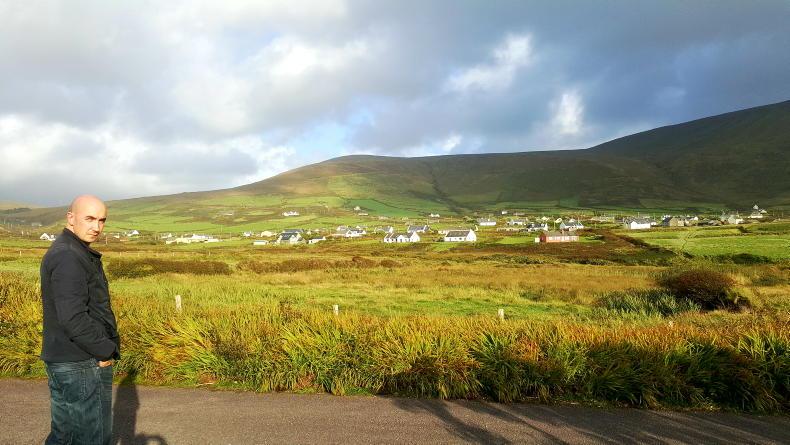
Dáithí de Mórdha in Dún Chaoin. \ Tommy Moyles
A landscape and its people are undoubtedly intertwined. Undeniably though, it is people – and therefore their culture – that make a place.
Dáithí de Mórdha is a native of Dún Chaoin, a Gaeltacht village located west of Dingle. In terms of both language and scenery, Dún Chaoin comes up trumps.
However, at present there are more houses than people in Dún Chaoin, many of them summer homes, and locals are struggling to find a way to live in their community. A situation that does not bode well for the Irish language.
“The problem was that during the 90s, basically, there was a free-for-all from a planning perspective. That resulted in a huge amount of houses,” Dáithí explains. “It created employment. Now it was locals who sold the land for these houses, et cetera. It brought a lot of money into the area.
“But fast forward to the 21st century, if you will, because of this glut of houses the planning laws were obviously tightened up and many local people when they came of an age to look for planning permission themselves, found that they were being refused.
“One of the reasons why they were being refused was ‘excessive density of development’. Basically, that there are too many houses here already and they didn’t want to build any more. So it was a fight and it’s been a fight for the past 20 years for any local who wants to get planning permission. It’s just the way it is.”
Three issues
As Dáithí sees it there are three issues as to why locals can’t live in the area:
1 Difficulty securing planning permission. 2 The cost of houses. 3 A lack of rural social housing. Difficulty for locals securing planning is outlined above. Although at present, Dáithí says he sees a “slight softening” in the council’s stance on planning permission in the area.
“People here and there are getting planning permission. But again, it seems to be a struggle. I’m not talking about people trying to build houses up on top of the mountains or up on top of the cliffs.
“There are people who are trying to build very modest houses within the old settlements and they’re being refused.”
On social housing, Dáithí references that since before independence it was traditionally provided in rural areas and now it is very scarce. He points to a cluster of five “congested district” houses he can see on the Blasket Islands from his window.
“They were built in 1909 and they were literally social housing. They were built to raise the standard of living for some of the poorest families on the island. That was over 110 years ago.”
The Land Commission built further rural dwellings in the 1930s and 40s, while social housing in rural areas was provided regularly up to the 1990s and 2000s.
“Since before independence, generations of rural dwellers in Ireland have been raised in these different types of social houses.
“I was raised in a traditional Irish farmhouse myself that was built by the Land Commission in 1938.
“A lot of my friends in school were raised in council houses, but that has stopped entirely.”
Social housing, Dáithí points out, could provide housing for some locals, as buying a house in the area is far out of reach of most.
So the supply of houses is entirely geared towards the second home market
“In this little village of Dún Chaoin – which is 5k from the nearest shop, 16km from the nearest bank and 10km from the nearest post office – there are two houses for sale at the moment.
“One of them is €600,000 and the other one is €700,000.
“I don’t need to explain to you that is beyond most local people or indeed most Irish people.
“So the supply of houses is entirely geared towards the second home market.
“Longer term I think the Government has to think of some policy to reduce the price of houses in this area, because they are way beyond the means of most ordinary working families.”
Goose and golden egg
The struggle to get housing in the area is in a way ironic, Dáithí highlights, as without communities living there, the very reason the area is so attractive will cease to exist.
“It’s killing the goose that laid the golden egg, because it’s all fine looking at the scenery, but you can get that in many places in Ireland.
“There’s something unique back here, which is to do with the language and the culture, that you can’t find in many places.
“If the community disappears then throw your hat at the Irish language as a living language, because you can have all the Duolingos or Irish language classes, the singing and music that you want, but if Irish ceases to be a living language, if communities go from being living communities to being summer communities – that’s it for the language.”
The national school in Dún Chaoin has grown in numbers of late. It now has 50 pupils, but to sustain the community into the future, these children must be able to live in the area as adults if they wish, says Dáithí.
“It’s the culture that draws a lot of people here.
Their kids are native Irish speakers now in the school, which is brilliant
“A lot of the people who are living here and are part of the community with their kids in the school, originally would have come because of that culture.
“Their kids are native Irish speakers now in the school, which is brilliant, but if you turn these local communities into retirement villages because the young people can’t live here, then it’s only a matter of time before that culture dies, the language dies, the local football teams die and everything associated with it dies.
“If the language is dear to the State, if they value it and cherish it and if they want it to be sustained as a living language for the next couple of generations, they have to do something about rural housing, because without communities there is no culture and without the culture there is no language.”
What difference can one family make in moving to an area?
Well in the case of Glangevlin, Co Cavan, it’s the difference between having a one or a two teacher school.
Cathal Hickey moved to the village with his wife and three children in 2018, after hearing about the “Stand with Glan” campaign.
His three children now attend Curravagh National School in Glangevlin, a 13 pupil, two teacher school.
Cathal grew up in Lexlip, Co Kildare. Before moving to Glangevlin he rented with his family in Rochfortbridge, Co Westmeath.
The whole community was there to meet us. They showed us the school. They showed us some houses that were available to rent
They were given notice of their landlord’s intention to sell the house and were looking for new accommodation in 2018, when Cathal’s mother saw Stand with Glan on the news.
The family decided to go and meet the community to see if they thought it would be a feasible opportunity for them.
“The whole community was there to meet us. They showed us the school. They showed us some houses that were available to rent. Basically we just came, picked the one we liked and moved in a month later.”
For Cathal, moving to Glangevlin has been a very positive experience. They’re not that much further away from amenities than they were in Rochfortbridge. And more so than anything, he favours the education opportunities for his children.
“I like the small school for the kids. It’s fantastic. The teacher has so much time for them.
“They’re coming along in leaps and bounds, whereas they may have been left behind in a bigger class.”
As a musician, Cathal does have to travel for work, but for those with remote working capabilities, he feels a rural area with good broadband, like here, is an ideal option.
We have everything everyone else has, except we have more
“I would absolutely recommend it. I can’t understand why more people don’t choose that option, to be honest. We have everything everyone else has, except we have more. We have open spaces and places to go.
“It’s very easy to make friends here. There are people here and I know I could count on them or they could count on me.
“It’s more of a ‘pull together community’ than you would find in a city, the suburbs or even a town.”
Along with schools, the GAA is at the heart of very many Irish communities. Although some GAA clubs have experienced a boost in player numbers due to COVID-19, others have felt the pinch of trying to field teams in rural areas.
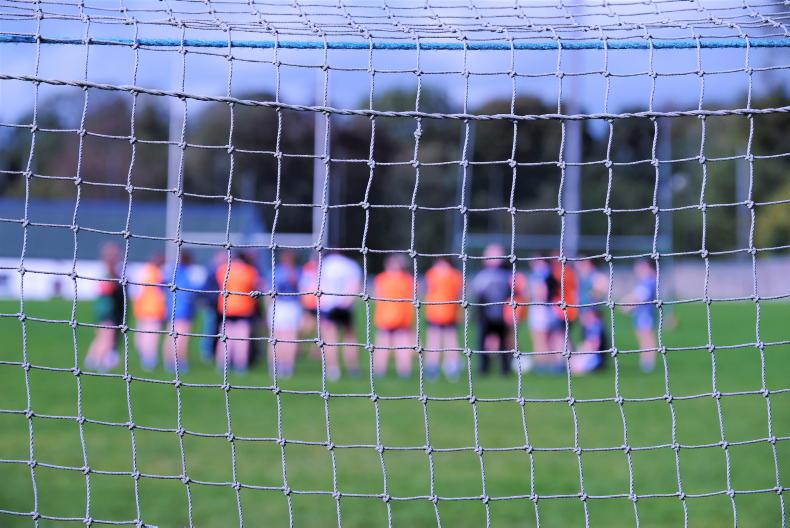
Some rural GAA clubs are feeling the pinch fielding teams.
Lacken Sarsfields in north Mayo produced many intercounty footballers over the years.
Last year the junior club had to pull out of the club championship and regroup due to a lack of players. Kerry club Young Valentia Islanders had to give up on fielding an adult team last year also.
The GAA have done work of late into the urban-rural divide in clubs. They have developed a Geographical Information System (GIS) which will help predict playing populations in clubs.
This will allow clubs to plan ahead for such eventualities as amalgamating with another club if numbers are set to drop.
The technology was piloted in Kerry, Westmeath, Roscommon and Tyrone.
Read more
House in the Country: rising prices
House in the Country: one-off rural housing
House in the Country: applying for planning permission in Co Leitrim
In its most basic function housing acts as shelter.
However, in a broader context it is much more.
Homes are the building blocks of communities; of the townlands, villages, parishes, towns and cities that make up this country.
Having already discussed one-off housing and farming, in this final part of House in the Country we look at the impact housing has on rural communities at large.
Gaeilge
The west Kerry Gaeltacht is famed for both its culture and its scenery; from the Irish language, song, dance and sport to Slea Head, Dún Chaoin Pier and Mount Brandon. That’s just to scratch the surface on both.

Dáithí de Mórdha in Dún Chaoin. \ Tommy Moyles
A landscape and its people are undoubtedly intertwined. Undeniably though, it is people – and therefore their culture – that make a place.
Dáithí de Mórdha is a native of Dún Chaoin, a Gaeltacht village located west of Dingle. In terms of both language and scenery, Dún Chaoin comes up trumps.
However, at present there are more houses than people in Dún Chaoin, many of them summer homes, and locals are struggling to find a way to live in their community. A situation that does not bode well for the Irish language.
“The problem was that during the 90s, basically, there was a free-for-all from a planning perspective. That resulted in a huge amount of houses,” Dáithí explains. “It created employment. Now it was locals who sold the land for these houses, et cetera. It brought a lot of money into the area.
“But fast forward to the 21st century, if you will, because of this glut of houses the planning laws were obviously tightened up and many local people when they came of an age to look for planning permission themselves, found that they were being refused.
“One of the reasons why they were being refused was ‘excessive density of development’. Basically, that there are too many houses here already and they didn’t want to build any more. So it was a fight and it’s been a fight for the past 20 years for any local who wants to get planning permission. It’s just the way it is.”
Three issues
As Dáithí sees it there are three issues as to why locals can’t live in the area:
1 Difficulty securing planning permission. 2 The cost of houses. 3 A lack of rural social housing. Difficulty for locals securing planning is outlined above. Although at present, Dáithí says he sees a “slight softening” in the council’s stance on planning permission in the area.
“People here and there are getting planning permission. But again, it seems to be a struggle. I’m not talking about people trying to build houses up on top of the mountains or up on top of the cliffs.
“There are people who are trying to build very modest houses within the old settlements and they’re being refused.”
On social housing, Dáithí references that since before independence it was traditionally provided in rural areas and now it is very scarce. He points to a cluster of five “congested district” houses he can see on the Blasket Islands from his window.
“They were built in 1909 and they were literally social housing. They were built to raise the standard of living for some of the poorest families on the island. That was over 110 years ago.”
The Land Commission built further rural dwellings in the 1930s and 40s, while social housing in rural areas was provided regularly up to the 1990s and 2000s.
“Since before independence, generations of rural dwellers in Ireland have been raised in these different types of social houses.
“I was raised in a traditional Irish farmhouse myself that was built by the Land Commission in 1938.
“A lot of my friends in school were raised in council houses, but that has stopped entirely.”
Social housing, Dáithí points out, could provide housing for some locals, as buying a house in the area is far out of reach of most.
So the supply of houses is entirely geared towards the second home market
“In this little village of Dún Chaoin – which is 5k from the nearest shop, 16km from the nearest bank and 10km from the nearest post office – there are two houses for sale at the moment.
“One of them is €600,000 and the other one is €700,000.
“I don’t need to explain to you that is beyond most local people or indeed most Irish people.
“So the supply of houses is entirely geared towards the second home market.
“Longer term I think the Government has to think of some policy to reduce the price of houses in this area, because they are way beyond the means of most ordinary working families.”
Goose and golden egg
The struggle to get housing in the area is in a way ironic, Dáithí highlights, as without communities living there, the very reason the area is so attractive will cease to exist.
“It’s killing the goose that laid the golden egg, because it’s all fine looking at the scenery, but you can get that in many places in Ireland.
“There’s something unique back here, which is to do with the language and the culture, that you can’t find in many places.
“If the community disappears then throw your hat at the Irish language as a living language, because you can have all the Duolingos or Irish language classes, the singing and music that you want, but if Irish ceases to be a living language, if communities go from being living communities to being summer communities – that’s it for the language.”
The national school in Dún Chaoin has grown in numbers of late. It now has 50 pupils, but to sustain the community into the future, these children must be able to live in the area as adults if they wish, says Dáithí.
“It’s the culture that draws a lot of people here.
Their kids are native Irish speakers now in the school, which is brilliant
“A lot of the people who are living here and are part of the community with their kids in the school, originally would have come because of that culture.
“Their kids are native Irish speakers now in the school, which is brilliant, but if you turn these local communities into retirement villages because the young people can’t live here, then it’s only a matter of time before that culture dies, the language dies, the local football teams die and everything associated with it dies.
“If the language is dear to the State, if they value it and cherish it and if they want it to be sustained as a living language for the next couple of generations, they have to do something about rural housing, because without communities there is no culture and without the culture there is no language.”
What difference can one family make in moving to an area?
Well in the case of Glangevlin, Co Cavan, it’s the difference between having a one or a two teacher school.
Cathal Hickey moved to the village with his wife and three children in 2018, after hearing about the “Stand with Glan” campaign.
His three children now attend Curravagh National School in Glangevlin, a 13 pupil, two teacher school.
Cathal grew up in Lexlip, Co Kildare. Before moving to Glangevlin he rented with his family in Rochfortbridge, Co Westmeath.
The whole community was there to meet us. They showed us the school. They showed us some houses that were available to rent
They were given notice of their landlord’s intention to sell the house and were looking for new accommodation in 2018, when Cathal’s mother saw Stand with Glan on the news.
The family decided to go and meet the community to see if they thought it would be a feasible opportunity for them.
“The whole community was there to meet us. They showed us the school. They showed us some houses that were available to rent. Basically we just came, picked the one we liked and moved in a month later.”
For Cathal, moving to Glangevlin has been a very positive experience. They’re not that much further away from amenities than they were in Rochfortbridge. And more so than anything, he favours the education opportunities for his children.
“I like the small school for the kids. It’s fantastic. The teacher has so much time for them.
“They’re coming along in leaps and bounds, whereas they may have been left behind in a bigger class.”
As a musician, Cathal does have to travel for work, but for those with remote working capabilities, he feels a rural area with good broadband, like here, is an ideal option.
We have everything everyone else has, except we have more
“I would absolutely recommend it. I can’t understand why more people don’t choose that option, to be honest. We have everything everyone else has, except we have more. We have open spaces and places to go.
“It’s very easy to make friends here. There are people here and I know I could count on them or they could count on me.
“It’s more of a ‘pull together community’ than you would find in a city, the suburbs or even a town.”
Along with schools, the GAA is at the heart of very many Irish communities. Although some GAA clubs have experienced a boost in player numbers due to COVID-19, others have felt the pinch of trying to field teams in rural areas.

Some rural GAA clubs are feeling the pinch fielding teams.
Lacken Sarsfields in north Mayo produced many intercounty footballers over the years.
Last year the junior club had to pull out of the club championship and regroup due to a lack of players. Kerry club Young Valentia Islanders had to give up on fielding an adult team last year also.
The GAA have done work of late into the urban-rural divide in clubs. They have developed a Geographical Information System (GIS) which will help predict playing populations in clubs.
This will allow clubs to plan ahead for such eventualities as amalgamating with another club if numbers are set to drop.
The technology was piloted in Kerry, Westmeath, Roscommon and Tyrone.
Read more
House in the Country: rising prices
House in the Country: one-off rural housing
House in the Country: applying for planning permission in Co Leitrim







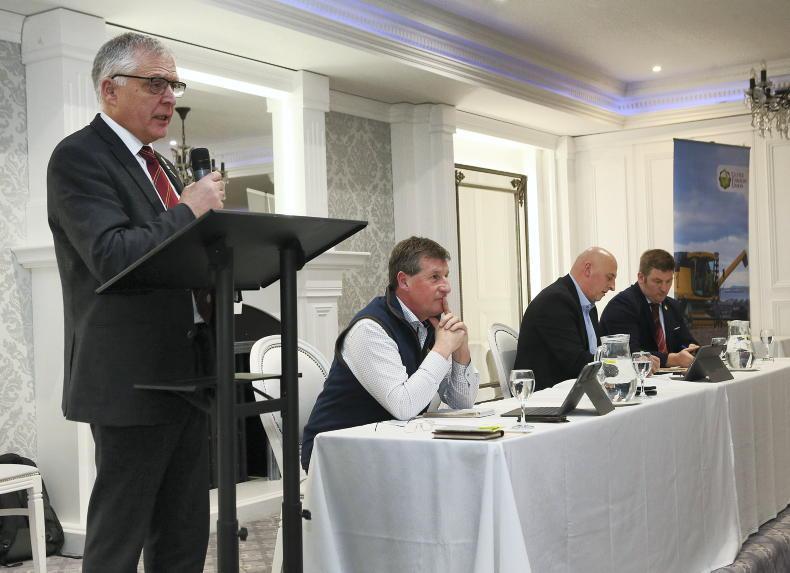

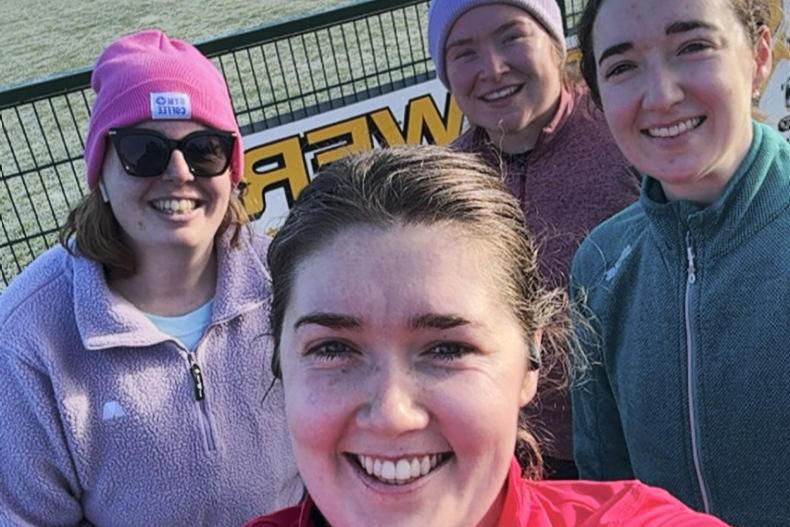
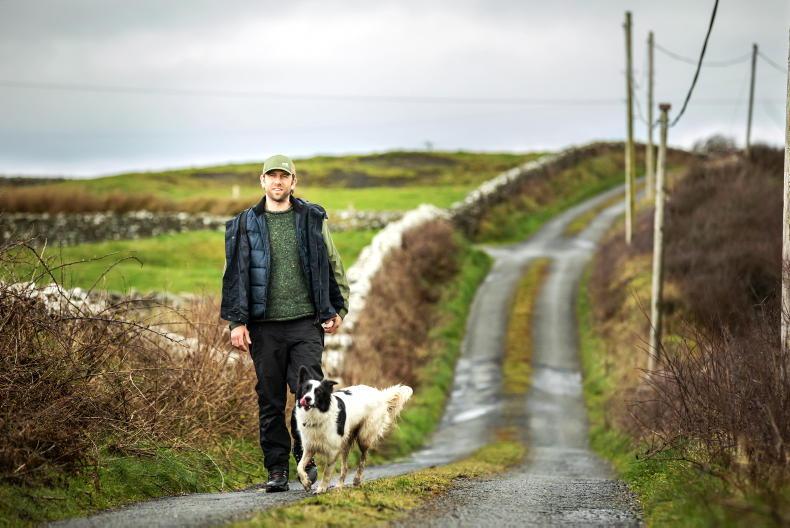

SHARING OPTIONS